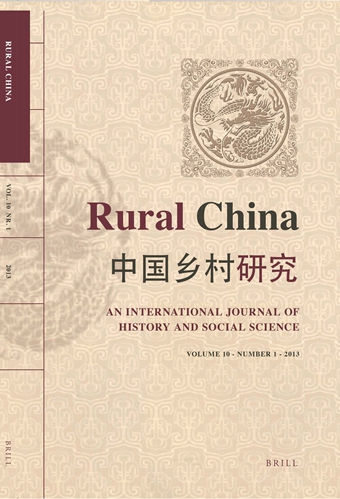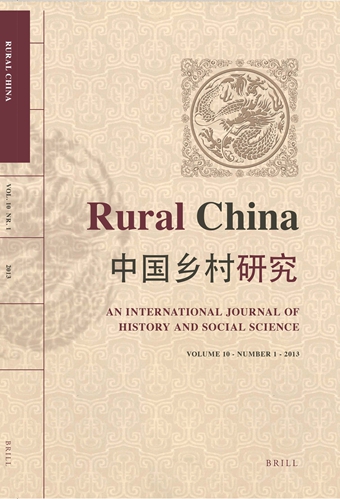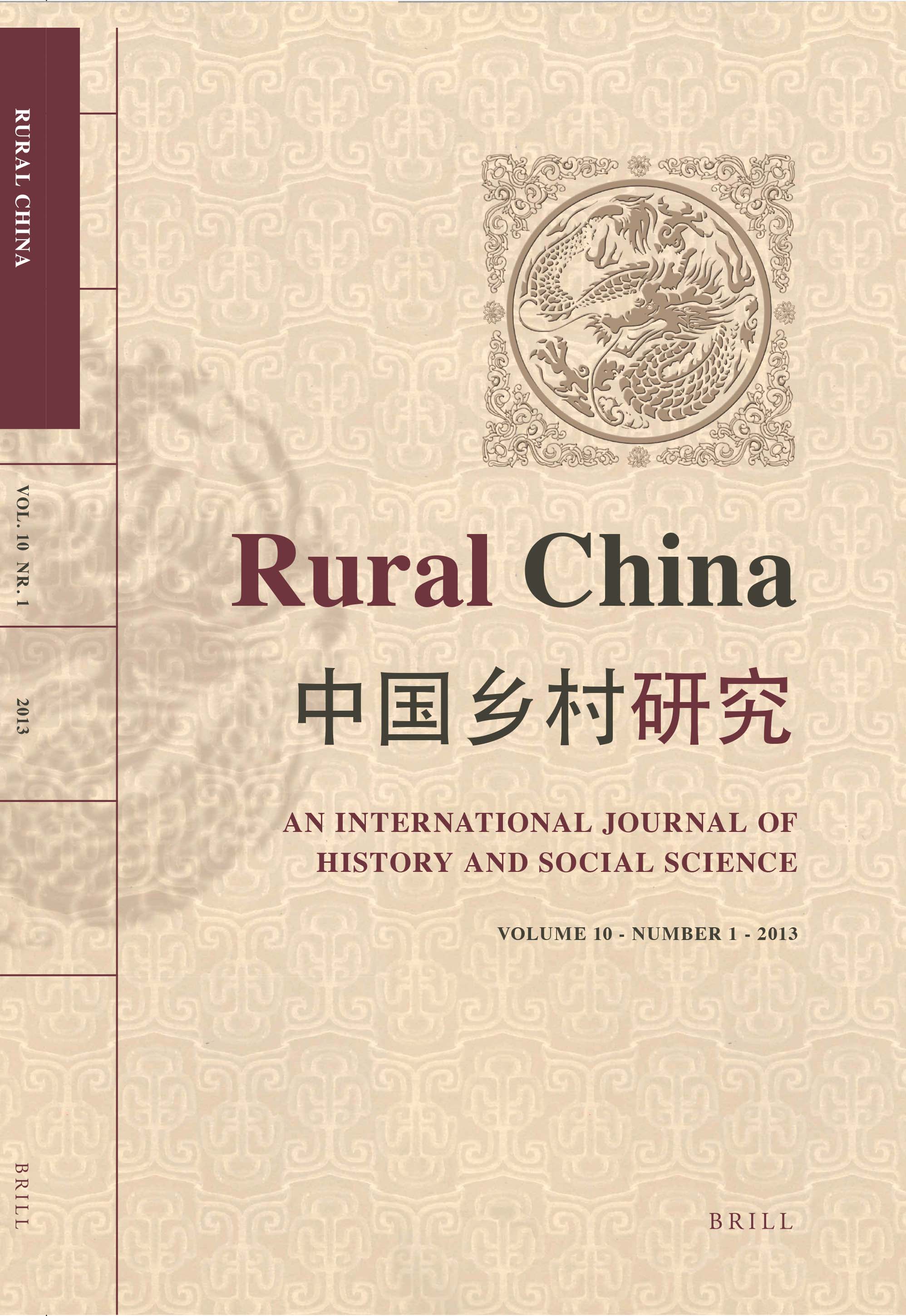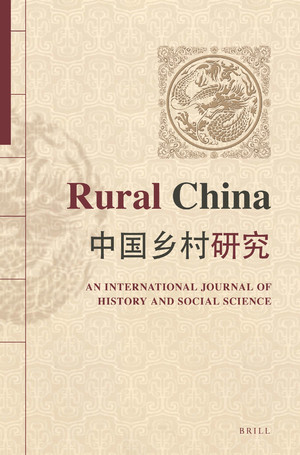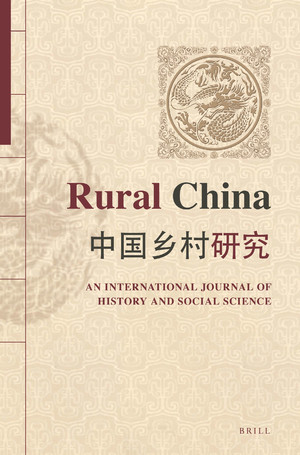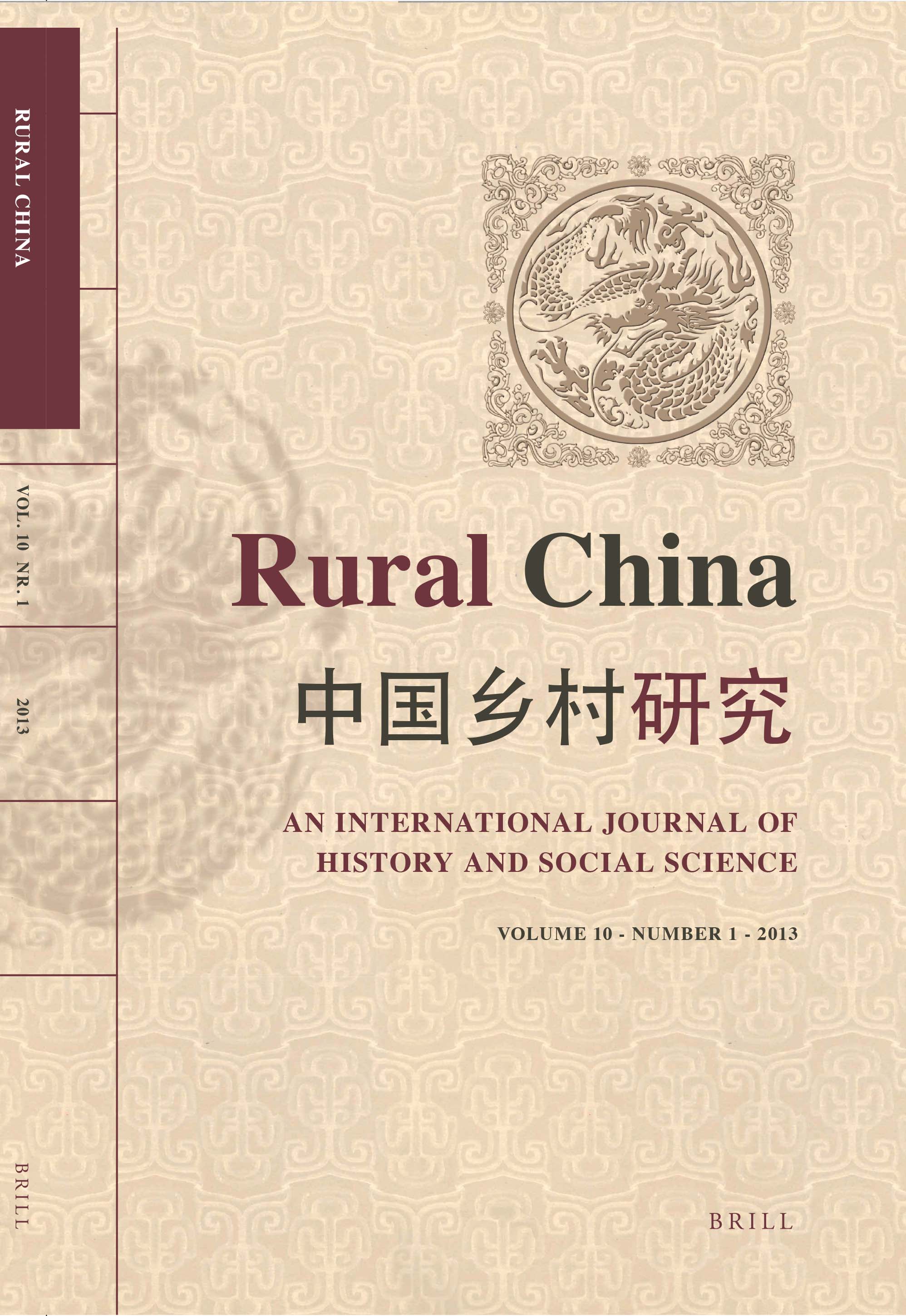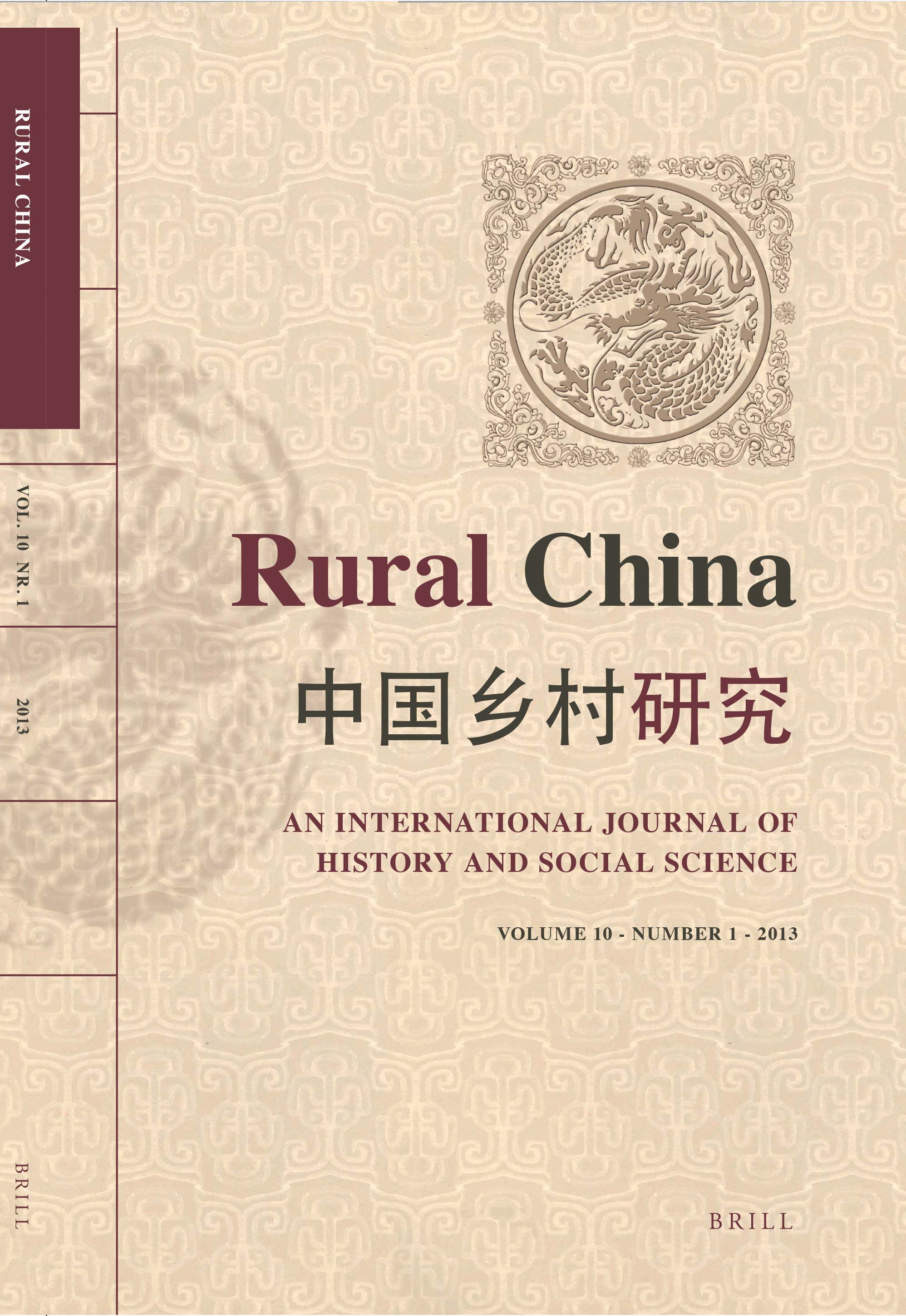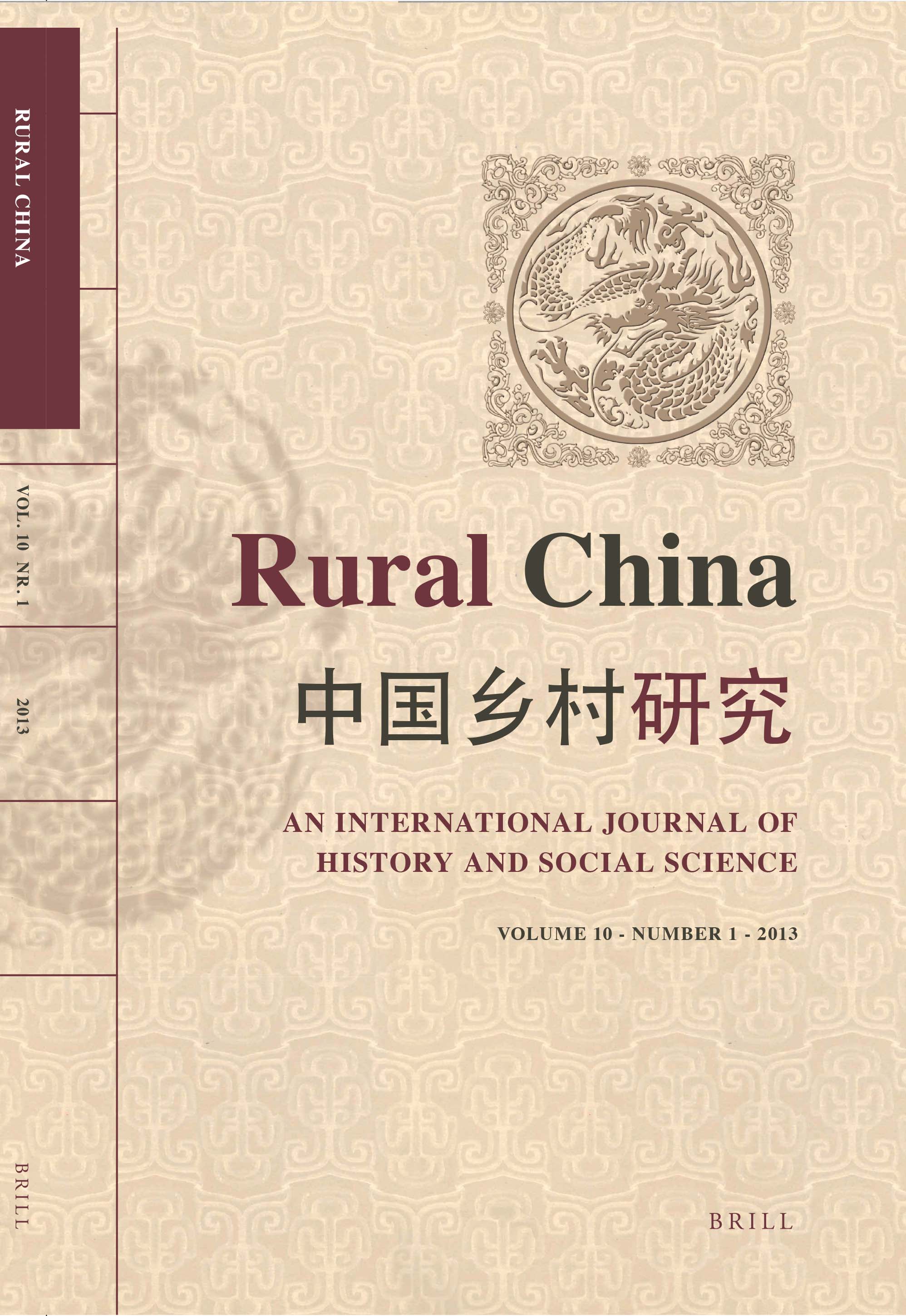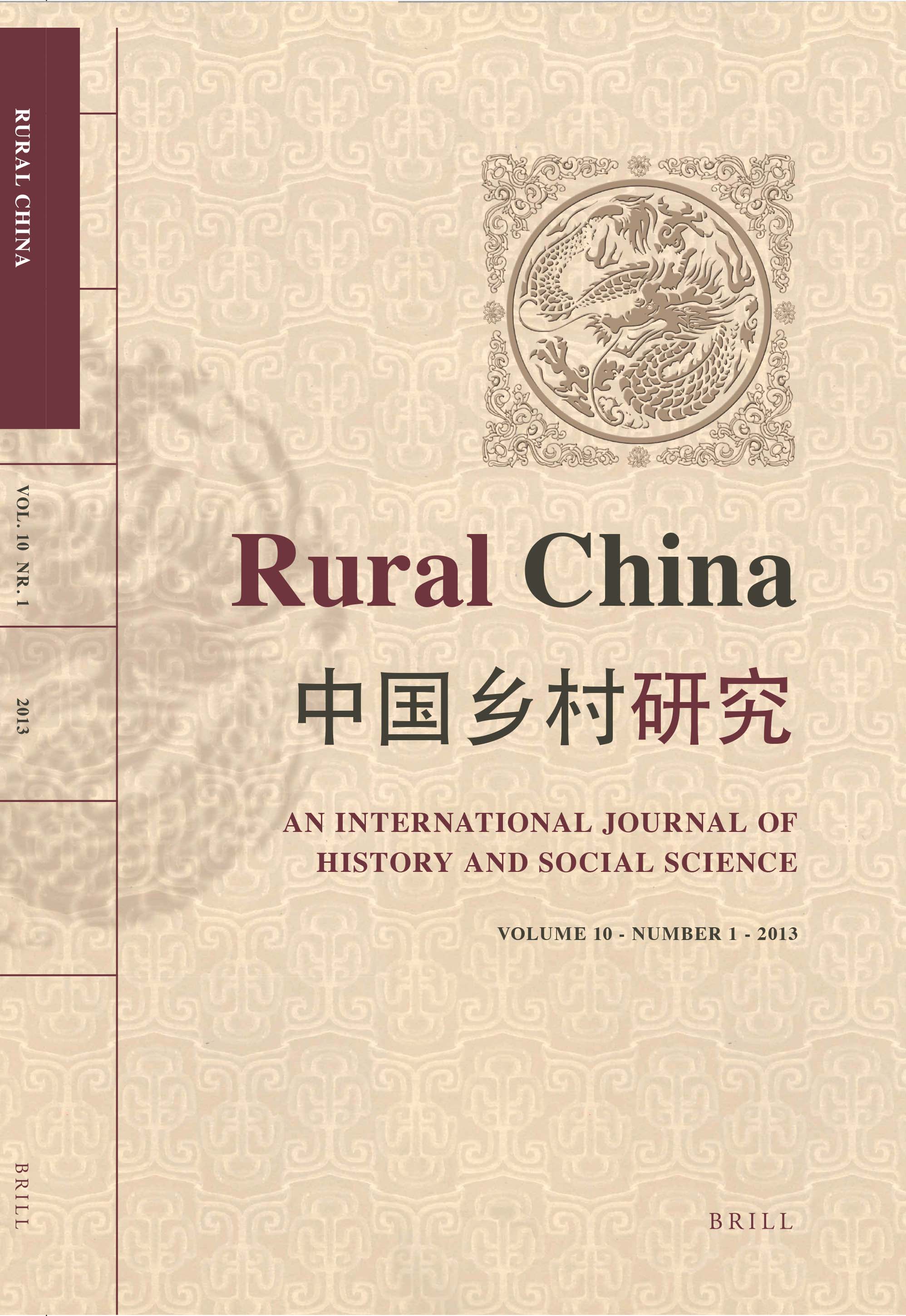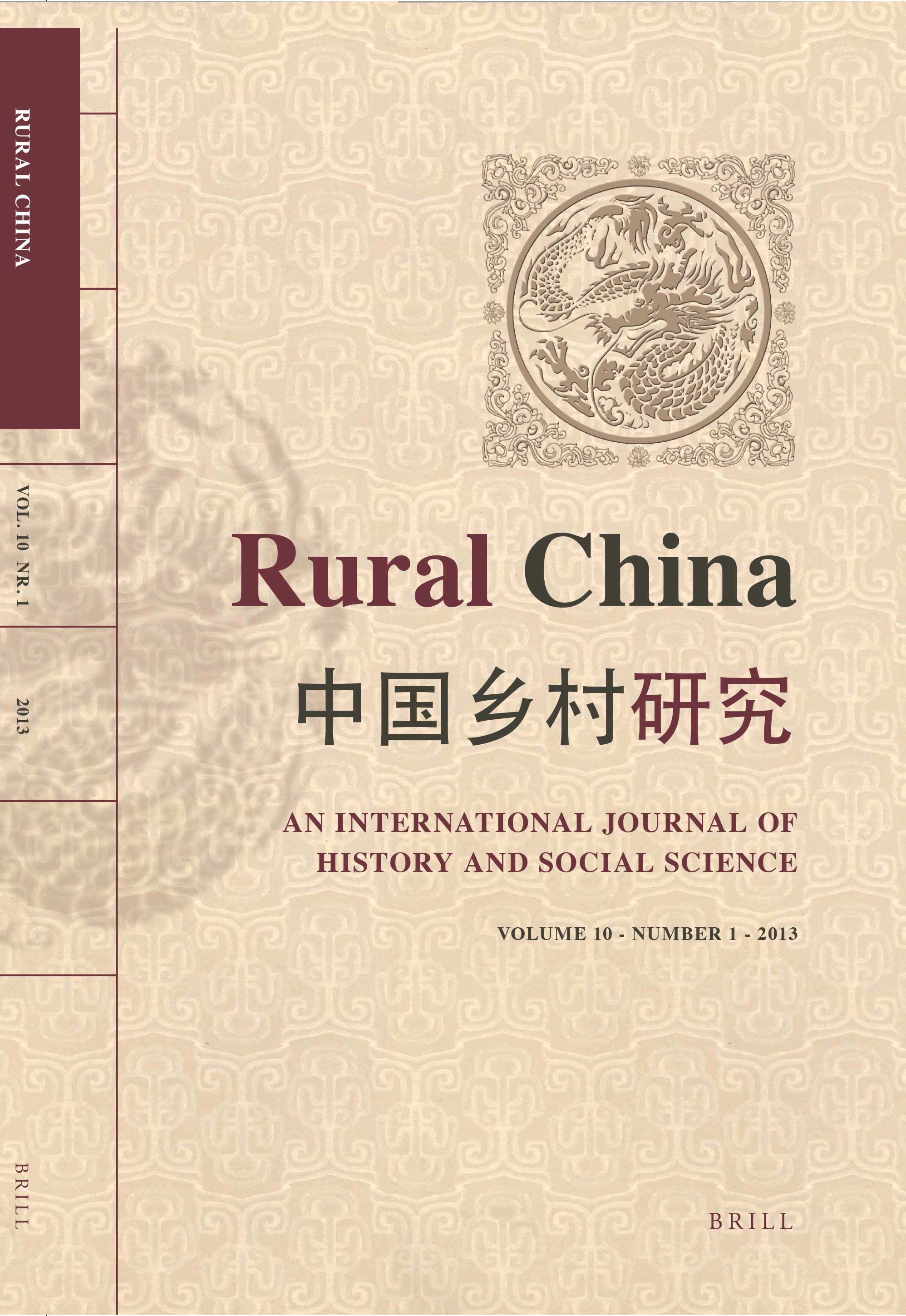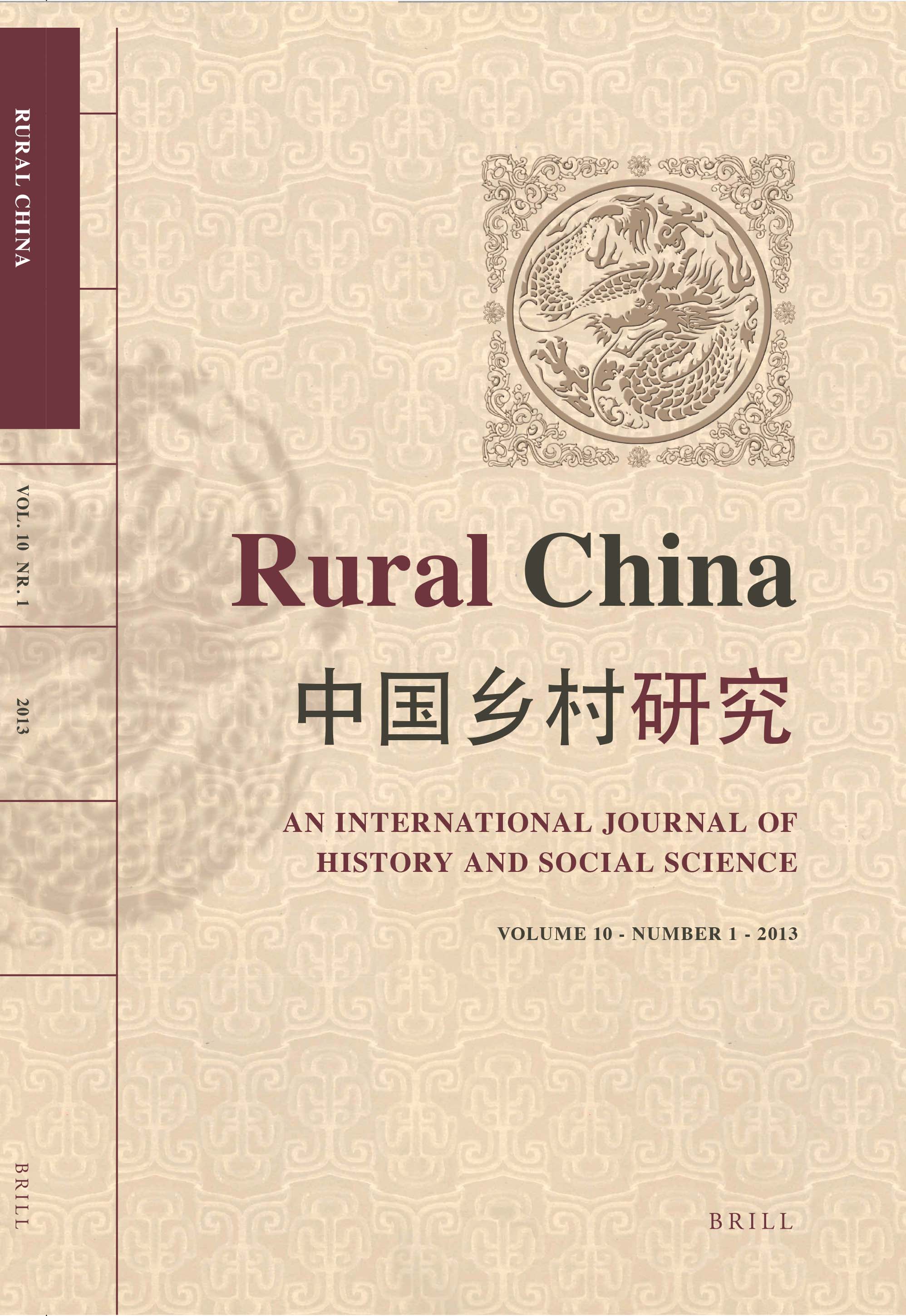Rural China “has been approved for inclusion in ERIH PLUS.”
Rural China “has been accepted for inclusion by Scopus.”
Rural China
Aims and Scope
Rural China is a multi-disciplinary journal that focuses on the past and present of China’s 900 million peasants (by registration, including peasant migrant workers in the towns and cities), their families and communities, and their interactions with the urban world. It publishes the best mainland Chinese and international scholarship from the disciplines of history, anthropology and sociology, and economics, political science and law, as well as other allied disciplines such as demography and geography, art and literature, public health, and comparative studies. As the first truly bilingual journal in Chinese studies, it will henceforth include both Chinese and English scholarly articles based on new research and/or new interpretations of old research. The journal has an international editorial board of distinguished scholars who help referee articles. Its targeted audience is the global community of China studies both within and outside China. It should be of interest to both scholars and advanced students, specialists and informed readers, as well as policy makers.
Editor
Philip C. C. Huang, History and Social Sciences, University of California, Los Angeles, California, USA;
Co-Editors
Kathryn Bernhardt, History, University of California, Los Angeles, California, USA
Gao Yuan, Rural Economics and Sociology, School of Agricultural Economics and Rural Development, Renmin University of China
Managing Editors
Zhang Jiayan, History, Kennesaw State University, Georgia, USA
Zhao Shan, Historical-Social Study of Law, School of Law, Tianjin University of Commerce
Jiang Zhengyang, Law and History, School of Law, Beijing Institute of Technology
Editorial Board
(Mainly English language-based)
Andreas, Joel, Sociology, Johns Hopkins University, Maryland, USA; Chan, Jenny, Sociology, The Hong Kong Polytechnic University, Hong Kong; Day, Alexander, History, Occidental College, California, USA; Harrell, Stevan, Anthropology and Environmental and Forest Sciences, University of Washington, Washington, USA; Isett, Christopher, History, University of Minnesota, Minnesota, USA; Judd, Ellen R., Anthropology, University of Manitoba, Canada; Lee, Ching-kwan, Sociology, University of California, Los Angeles, California, USA; Li Huaiyin, History, University of Texas, Austin, Texas, USA; Li Lianjiang, Government and Public Administration, The Chinese University of Hong Kong, Hong Kong; Murphy, Rachel, Sociology, Oxford University, UK; O’Brien, Kevin, Political Science, University of California, Berkeley, California, USA; Pun Ngai, Sociology, The Hong Kong Polytechnic University, Hong Kong; Reed, Bradly W., History, University of Virginia, Virginia, USA; Shue, Vivienne, Politics and Society, Oxford University, UK; Unger, Jonathan, Political and Social Change, Australian National University, Australia; Whiting, Susan, Political Science, University of Washington, Washington, USA; Wu Jieh-min, Sociology, Academia Sinica, Taiwan; Zhang, Qian Forrest, Sociology, Singapore Management University, Singapore
(Mainly Chinese language-based)
陈柏峰,法理学、法律社会学、农村社会学,中南财经政法大学法学院;董磊明,农村社会学,北京师范大学;桂华,农村社会学,武汉大学;贺雪峰,农村社会学,武汉大学; 黄家亮,法律社会学、农村社会学,中国人民大学社会与人口学院社会学系;李放春,历史学,重庆大学人文社会科学高等研究院;刘昶,历史,华东师范大学;刘全娥,法律史学,西北政法大学;渠桂萍,中国近现代乡村社会史,华南师范大学;王跃生,人口学,中国社会科学院;吴重庆,民间宗教,中山大学;吴毅,农村社会学,华中科技大学;夏明方,历史学,中国人民大学;应星,社会学,清华大学;张静,政治社会学,北京大学;张小军,人类学,清华大学;张玉林,乡村社会与环境问题,南京大学;赵晓力,法学,清华大学;赵旭东,人类学、法学,中国人民大学
STYLE SHEET
Rural China provides a forum for high quality scholarly research on rural China and its 900 million peasants (by registration). It aims to help stimulate advances in both empirical and theoretical research, and welcomes submissions of articles based on original research, or new understandings of old research. It aims to promote internationalization of rural China studies and welcomes articles in either English or Chinese. There will be both an international edition of the journal, to be published by E. J. Brill, to appear in April and October every year, and a mainland China edition, to be published by the Guangxi shifan daxue chubanshe 广西师范大学出版社.
(1) MANUSCRIPTS: Should be double-spaced with one-inch margins. Articles in Chinese should be submitted as an e-mail attachment to ruralchinastudies@gmail.com, and articles in English should be submitted as an e-mail attachment to kathrynbernhardtruralchina@gmail.com. Rural China uses a blind peer review process. Authors should not include their names in the manuscript and should avoid other identifying references. Please include an abstract of about 200 words and 4-5 keywords. Bilingual scholars should provide their own abstract in Chinese (about 300 words) in the final stages of preparation for print.
(2) TEXT:
(a) Heads. The text should be broken by subtitles to facilitate reading.
(b) Text Citations. Specify all references in the text (and in the text of any notes) by last name of author and year of publication, with pagination as appropriate. Do not use ibid., op. cit., loc. cit., supra, infra, or cf; instead show subsequent citation of the same source in the same way as the first citation. For titles in English, provide full names in the citation only when the reference list includes more than one author with the same surname. For titles in Chinese, provide the author’s full name. List complete information for every reference at the end of the article only, under “REFERENCES.”
Examples:
As a result, "the elite strengthened their control of the militia and therefore of the local areas" (Wei, 1985: 160). Please note the comma after the author’s name and the colon after the date.
Indeed, in the absence of any immediate need, many counties simply disbanded their militia at this time (Hunan zhengbao, December 20, 1912; Fu and Liu, 1933: 13-14, 17-18).
(c) Notes. Use notes for discursive comments, not for documentation.
Superscripts for location of notes should be inserted in the text and all notes should be numbered consecutively and placed at the bottom of each page. Notes should be in the same 12 point font of the text and should be double-spaced. Please try to keep the number and length of notes to a minimum.
(d) Italics. Use italics sparingly. Italicize foreign terms only at the first occurrence in the article.
(e) Upon first mention of another scholar’s name in the text, provide his or her first and last name, not just the last name.
(3) REFERENCES: List all references alphabetically by author and (for works by the same author) chronologically by year of publication. In references, observe these standards:
(a) List authors by full name. Use a comma after the surname of an author with an East Asian name only if the author’s work cited was written in a Western language and the author used Western name order.
(b) If the references include works by an author under both an English name and his/her Chinese name, be sure to cross-reference the names so that the reader is aware that it is the same person.
(c) Do not use “et al.” List all collaborators.
(d) Periodical data should be complete (volume, month, pages, series).
(e) Do not use italics or boldface.
(f) For the titles of articles in English, capitalize only the first word and proper nouns (e.g,, “Care work in China—in and beyond the informal economy”).
(g) Give English translation in parentheses following titles of East Asian books and articles. Provide English translations also of organizations or institutions that serve as “authors,” compilers, or editors.
(h) In the English translations of titles of works in East Asian languages, capitalize only the first word and proper nouns -- e.g., 毛泽东选集 (The selected works of Mao Zedong).
Examples:
Cheng Maoxing 程懋型 (1936) 现行保甲制度 (The current baojia system). 上海: 中华书局.
Ch’ü, T’ung-tsu (1962) Local Government in China under the Ch’ing. Cambridge, MA: Harvard Univ. Press.
Duara, Prasenjit (1990) “Elites and the structures of authority in the villages of North China, 1900-1949.” Pp. 261-81 in Joseph W. Esherick and Mary Backus Rankin (eds.), Chinese Local Elites and Patterns of Dominance. Berkeley: Univ. of California Press.
Huailu xian zhi 获鹿县志 [Gazetteer of Huailu county] (1985 [1876]). 获鹿: 获鹿县政府.
Judd, Ellen R. “Care work in China—in and beyond the informal economy.” Rural China 14, 1: 42-60.
National Statistics Compilation Department, National Bureau of Statistics 国家统计局国民经济綜合统计司 (2010) 新中国60年统计资料汇编1949-2008 (Compilation of sixty years of statistics on New China, 1949–2008). 北京: 中国统计出版社.
Zhou Feizhou 周飞舟 (2006) “从汲取行政权到‘悬浮型’政权——税费改革对国家与农民关系之影响” (From an extractive administration to a suspended-in-the-air administration: the influence of tax and fees reform on the relationship between the state and the peasant). 社会学研究 3: 1–38.
(4) TRANSLITERATION:
(a) Chinese. Use the pinyin system in transliterating Chinese terms and names. In-text, authors may elect to use characters instead where preferable and appropriate. For titles in References, characters followed by the English translation within parentheses is preferred to pinyin rendering of the title followed by English translation. If characters are used for titles in the References, please also provide the characters for the author’s name after the name in pinyin. Wherever necessary, the old spelling may be put in parentheses on the first occurrence. Do not hyphenate given names (Zhou Enlai); hyphenate other words and terms only when necessary for clarity. Exceptions to the pinyin rule, for the sake of clarity, will be considered at the author’s request. A reliable source for the pinyin system is the Xinhua zidian (Beijing: Shangwu yinshuguan, 11th ed., 2011).
(b) Japanese. Follow the system of Kenkyusha’s New Japanese-English Dictionary (Tokyo: Kenkyūsha, 1954), but omit macrons over long vowels in well-known place names (e.g., Tokyo).
(c) Korean. Follow the McCune-Reischauer system described in “The Romanization of the Korean Language,” Transactions of the Korean Branch, Royal Asiatic Society 29 (1939): 1-55, but substitute an umlaut for the half-moon.
JOURNAL POLICY
(1) MALE-ORIENTED LANGUAGE: Do not refer to sexually mixed groups of people by using male-oriented words (“men,” “man,” “brothers”) and do not personify such groups as male (“the Chinese revolutionary and his outlook”).
(2) CHINA: The journal will refer to China as “China” or the “People’s Republic of China.” Expressions such as “Red China” or “Communist China” will be avoided. Do not use vague terms such as “the Reds,” “the Communists” or “the Chinese” when a more specific expression (the Chinese people, the Party, the government, the Central Committee, the China Travel Service) is in order. The term “Communists” should be applied only to Party members.
